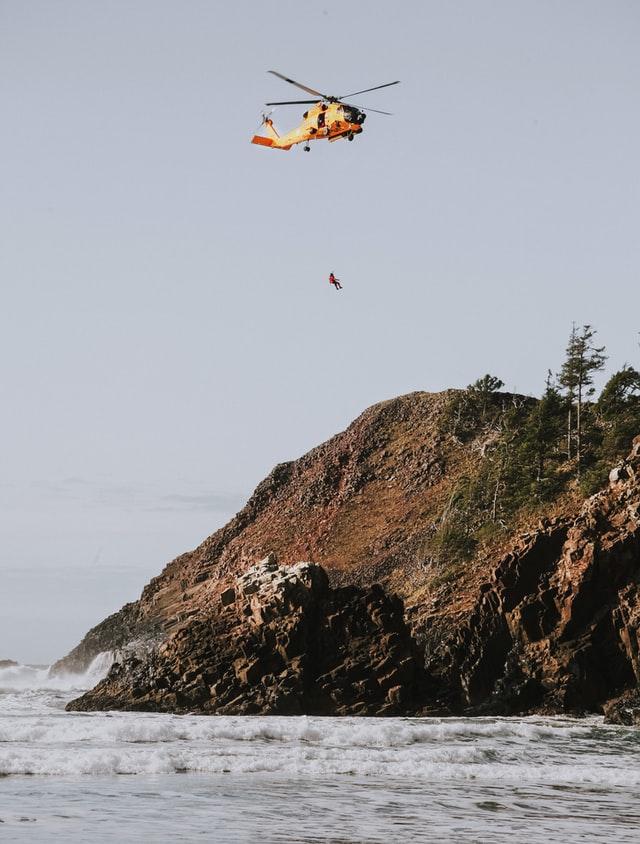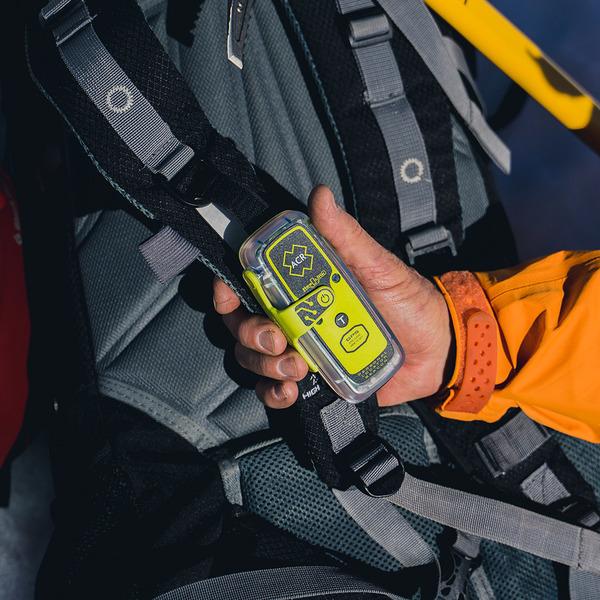PLBs (Personal Locator Beacons) are a must-have accessory for Australian hiking enthusiasts. In fact, anyone heading into the great outdoors should equip themselves with one of these life-saving devices for use in a life or death emergency.
They are a small and lightweight device that, upon activation, transmits a signal which is picked up by satellite and relayed to emergency services.
Ground crews or helicopters are typically dispatched, depending on the terrain. They use the PLB’s coordinates to find the person in need of assistance. Emergency Position Indicating Radio Beacons, or EPIRBs can do the same thing.
Even though any personal locator beacon is worth having, it’s always crucial to do your homework to ensure you can arm yourself with the best PLB in Australia. After all, you can’t put a price on your peace of mind.
If you only have the need to use a PLB (or EPIRB) once or twice a year, you might even be better off hiring one for each of your outdoor adventures. There are a number of PLB hire and EPIRB hire services in Australia, which offer a range of options for hire by mail or by picking up from a store.
So what are you waiting for? The following information may just help you decide which PLB is right for you.
Personal Locator Beacons vs. SPOT Messengers
When you’re on the hunt for the best PLB, you may discover a device called a SPOT messenger, or satellite messenger. While both SPOT messengers and PLBs have their place, there are some remarkable differences between the two.
Personal Locator Beacons
These units send SOS signals along with your location to emergency services. They work worldwide in remote locations and have a stronger signal than a SPOT messenger. They also offer a multi-year battery life. However, you can’t use them to send messages or cancel your callout.
SPOT Messengers
Like PLBs, you can use a SPOT messenger to send out an SOS signal. You can also use them as a communication method since they can send and/or receive non-emergency messages. Some models also offer GPS navigation features.

When choosing between SPOT messengers and PLBs, it’s important to note that you have to pay a subscription with a SPOT messenger. They also require unobstructed views of the sky for the best signal. In many situations, hikers and outdoor enthusiasts prefer PLBs in Australia because of their one-off cost and stronger signal.
What to Look for When Buying a PLB
And this is where it gets tricky. If you’ve decided that you’d like to buy the best PLB in Australia, you have to factor various features into your decision. Not all PLBs will have all features.
GPS
One of the most desirable features in a personal locator beacon is GPS. Fortunately, most modern PLBs have GPS, which means rescuers can use coordinates sent from your device to locate you.
Waterproof & Buoyancy
The great outdoors can offer some spectacular and varied scenery. One minute, you can be in a desert, and the next, a watery oasis. With that in mind, having a waterproof and buoyant PLB can be necessary.
Before you purchase one, read through the fine print to ensure it’s watertight and can remain buoyant for at least a short time. Not all PLBs float, which can cause problems if you happen to drop one in deep water.
Battery Life
Perhaps one of the most crucial features of the best PLB is its battery life. The longer it lasts, the more convenient it will be. Fortunately, most have a finite battery life of between five and ten years. At this point, you would need to upgrade your beacon. Some also have batteries with a shorter lifespan, which you must send away to replace.
Transmission Time
If you end up needing emergency assistance, your PLB’s transmission time can make a world of difference. Emergency services may not be able to get to your location immediately. Look out for a PLB that will transmit a signal for at least a full 24 hours after activation.
PLBs for Land Use
Personal locator beacons for land use are designed for adventurers who intend to explore the great outdoors. They are small, lightweight, and sometimes watertight.
The majority of new models on the market have built-in GPS, enabling rescue teams to find your on-land position. However, you can also use land PLBs for air and maritime if you’re within two nautical miles of a coast.
PLBs for Water
Best PLBs in Australia
The GME AccuSat MT610G GPS PLB is unique in that GME are an Australian company, established in the 1960s, that mostly manufactures their products right here in Australia. That alone makes it worth considering this PLB as one of your top choices.
Working on a 72 channel GPS receiver with an accuracy of under 100 metres, and housed in an IP68 dustproof and waterproof case. It’ll also float upright without the need for any additional flotation device, and includes a bright flashing light for when in activation mode. It’s small and light at only 88 x 66 x 36mm and 160g.
Battery Life
You’ll have 7 years of use (without activation) before you need to have the battery replaced and the unit refurbished.
Waterproof
The GME MT410G is waterproof to 15 metres and fully buoyant, meeting and exceeding IP67 standards.
Access
This PLB has a two-step activation process, with the activation button located under the antenna flap. Not only does this help avoid accidental activation, but it also helps the user remember to extend the antenna prior to activating.
Pros:
- Simple to use
- It’s affordable
- Small and lightweight
Cons:
- None.

The Ocean Signal RescueMe PLB1 is a must-have for any adventurer. It’s a compact, lightweight device with a flotation pouch and waterproofing up to 15m. It also requires no subscription and provides a seven-year battery life.
This PLB also has the added benefit of featuring rugged plastic that withstands wear and tear and versatility for use on the sea or land.
Battery Life
The battery life of this PLB offers much-needed peace of mind. It can last for up to seven years without being used in an emergency.
Waterproof
This PLB can remain submerged in up to 15m of water for up to an hour. It also has a flotation pouch to stop it from sinking.
Access
Access to the activation button is under a spring-loaded flap. Users can enjoy peace of mind that they won’t accidentally set it off.
Pros:
- It’s affordable
- Rugged plastic to handle wear and tear
- Not easy to accidentally set it off
- Suitable for land or sea
Cons:
- Battery life is not as long as some others

The ACR ResQLink View PLB is the very peace of mind you need to go adventuring. This personal locator beacon doesn’t require a subscription and offers accurate GPS positioning.
It also operates on three Cospas-Sarsat satellite systems with a beacon location time of around five minutes. What’s more, it provides a live beacon status for up to 28 hours. This exceptionally robust and compact device can become any adventurer’s best friend.
GPS
It features GPS and Galileo GNSS.
Waterproof
It can survive being dropped in five metres of water for an hour or ten metres for 10 minutes.
Warranty
This PLB comes with a five-year warranty.
Pros:
- Accurate GPS positioning
- Waterproof
- Built-in buoyancy
- Multiple wearing options
Cons:
- Battery life is lacking compared to other models

The ACR ResQLink 400 PLB is a subscription-free device that will suit the everyday adventurer. It operates on three Cospas-Sarsat satellite systems, has a 24-hour operational life, and even comes with multi-function clips.
People also enjoy the addition of the strobe for visibility, not to mention the self-test option to ensure it’s working.
Waterproof
It’s waterproof for up to an hour in 5m of water or 10 minutes in 10m.
Access
You can activate the PLB by deploying the antenna and pushing a button.
Multi-Function Clip
The multi-function clip allows you to wear and secure this PLB in many different ways.
Pros:
- Waterproof
- Compact and lightweight
- Easy to use
- You can test it
Cons:
- The waterproof feature is lacking compared to some other models

Final Thoughts
As Oscar Wilde once said, “live life with no excuses, travel with no regrets”. The next time you start planning an adventure you should put thought into not only exploring new, exciting places, but packing the items that can keep you as safe as possible while you adventure.
Whether you intend on hiking for a day, a few days, or a week, consider the peace of mind a PLB can bring.
Is today the day you invest in this life-saving device?
Disclaimer: The above links are affiliate links, meaning I will be given a percentage of all purchases. This doesn’t mean you pay anything extra and doesn’t influence the opinions I have presented in this article in any way.
Is there a different PLB you prefer to use? If you have any comments, updates or corrections, please let us know in the comments section below.






PLB’s should be registered with AMSA. Many “spot” and “messenger” devices marketed as emergency PLB’s are not recognised by AMSA which is the organisation that is going to be looking for you. Please purchase a device recognised by AMSA. Your life may depend on it.
I want to thank the editor/s for your blog it is informative and concise in its approach. I am from both a maritime and land environment having a PLB on my PFD but also use it when I travel remotely on land eg Simpson Desert. Keep up the great work…love the Oscar Wilde quote.
Thanks for the kind words, Dave!
My first plb was a GME MT410 and when the battery was due for a replacement, it was expensive to replace (in fact they would only exchange your unit for a secondhand one with a new battery) As the Ocean Signal Rescueme plb1 was smaller, and would be brand new, I purchased one. Now this unit has 3 months to run on the 7 year battery life and I notice GME have released a new PLB called MT610G. Any chance you could offer comments on it compared to the Ocean Signal? GME don’t seem to offer complete information on their website to be able to compare. ie GPS accuracy.
Hi Barry,
Unfortunately, there isn’t a lot of info available on that one. We won’t include it in this roundup until we find out more.
Cheers
Neil
Sadly KTI has wound up their business, therefore all devices discontinued. Apparently a Norwegian company has bought the design but so far has nothing registered in Aus
That’s very unfortunate, but thanks for letting me know Daniela! I will update the article to reflect this asap.
Thanks
RS